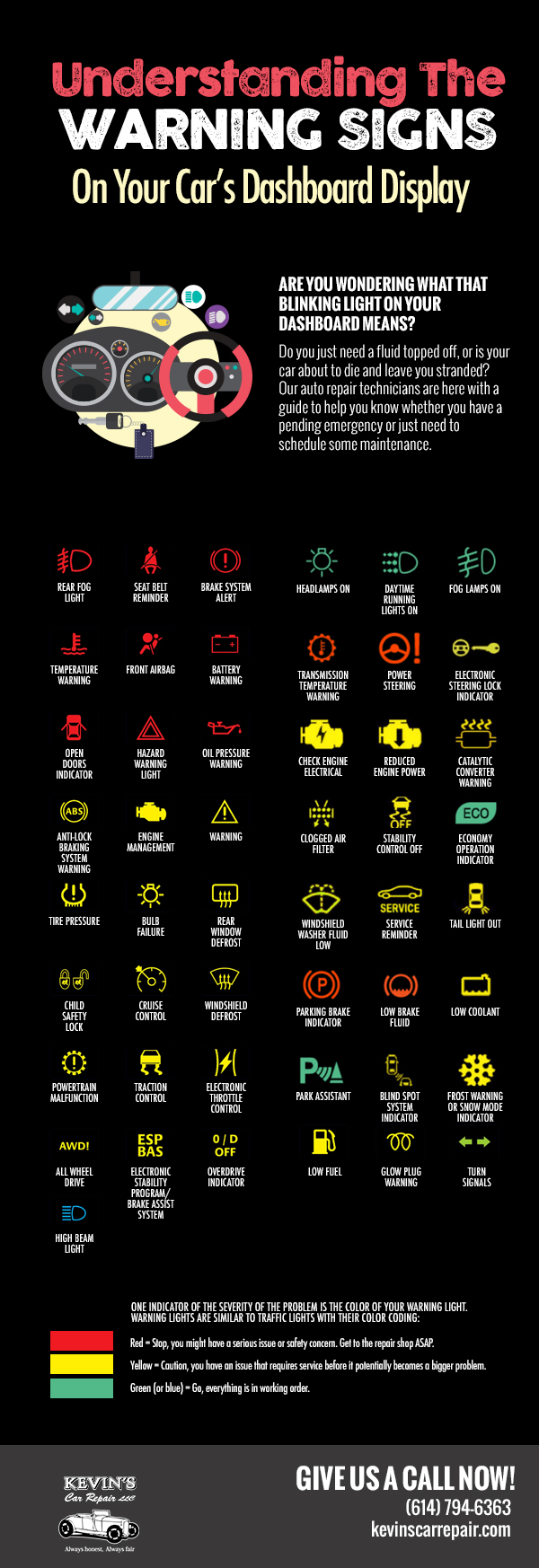Analyzing Your Vehicle'S Alert Lights: Their Real Implications
Analyzing Your Vehicle'S Alert Lights: Their Real Implications
Blog Article
Post Writer-Samuelsen Shepherd
When you lag the wheel, those glowing caution lights on your control panel can be a bit bewildering. Do please click the next website page know what they're attempting to inform you regarding your automobile's health and wellness? Recognizing the relevance of these lights is crucial for your safety and the longevity of your automobile. So, the following time among those lights turns up, would not you intend to analyze its message accurately and take the required steps to resolve it?
Common Warning Lights and Interpretations
Recognize typical warning lights in your cars and truck and recognize their definitions to guarantee secure driving.
The most regular caution lights include the check engine light, which indicates problems with the engine or discharges system. If this light begins, it's essential to have your vehicle examined immediately.
The oil pressure advising light indicates reduced oil pressure, calling for prompt interest to stop engine damages.
A blinking battery light might recommend a damaged charging system, potentially leaving you stranded otherwise addressed.
The tire stress tracking system (TPMS) light notifies you to reduced tire stress, impacting car stability and gas effectiveness. Ignoring this could cause hazardous driving conditions.
The abdominal light shows a problem with the anti-lock stopping system, jeopardizing your capacity to stop promptly in emergency situations.
Lastly, the coolant temperature level advising light warns of engine overheating, which can cause extreme damage otherwise fixed swiftly.
Recognizing these common warning lights will help you attend to problems quickly and keep risk-free driving problems.
Value of Prompt Interest
Understanding the common caution lights in your car is just the very first step; the relevance of promptly dealing with these warnings can't be stressed sufficient to ensure your safety when traveling.
When a warning light illuminates on your control panel, it's your automobile's means of connecting a prospective concern that needs attention. Disregarding these cautions can result in more extreme troubles later on, jeopardizing your security and possibly costing you a lot more in repairs.
Trigger attention to warning lights can protect against malfunctions and accidents. For car cut and polish , a flashing check engine light could indicate a misfire that, if left unattended, can trigger damage to the catalytic converter. Resolving this quickly can save you from an expensive repair.
In a similar way, a brake system cautioning light might indicate low brake fluid or used brake pads, critical components for your security when driving.
Do It Yourself Troubleshooting Tips
If you discover a caution light on your control panel, there are a few do it yourself troubleshooting pointers you can attempt before seeking specialist aid.
The initial step is to consult your car's handbook to comprehend what the particular caution light suggests. In some cases the issue can be as easy as a loosened gas cap causing the check engine light. Tightening the gas cap might fix the issue.
One more common problem is a reduced battery, which can set off different advising lights. Inspecting the battery connections for deterioration and guaranteeing they're secure could take care of the trouble.
If a caution light continues, you can try resetting it by disconnecting the cars and truck's battery for a few mins and after that reconnecting it. Additionally, checking your car's liquid levels, such as oil, coolant, and brake fluid, can help repair warning lights related to these systems.
Final thought
To conclude, comprehending your car's warning lights is vital for keeping your automobile running efficiently and securely. By immediately dealing with these informs and knowing what they indicate, you can avoid expensive fixings and possible failures.
Bear in mind to consult your vehicle's guidebook for specific information on each cautioning light and do something about it accordingly to ensure a trouble-free driving experience.
Remain informed, stay secure when traveling!
